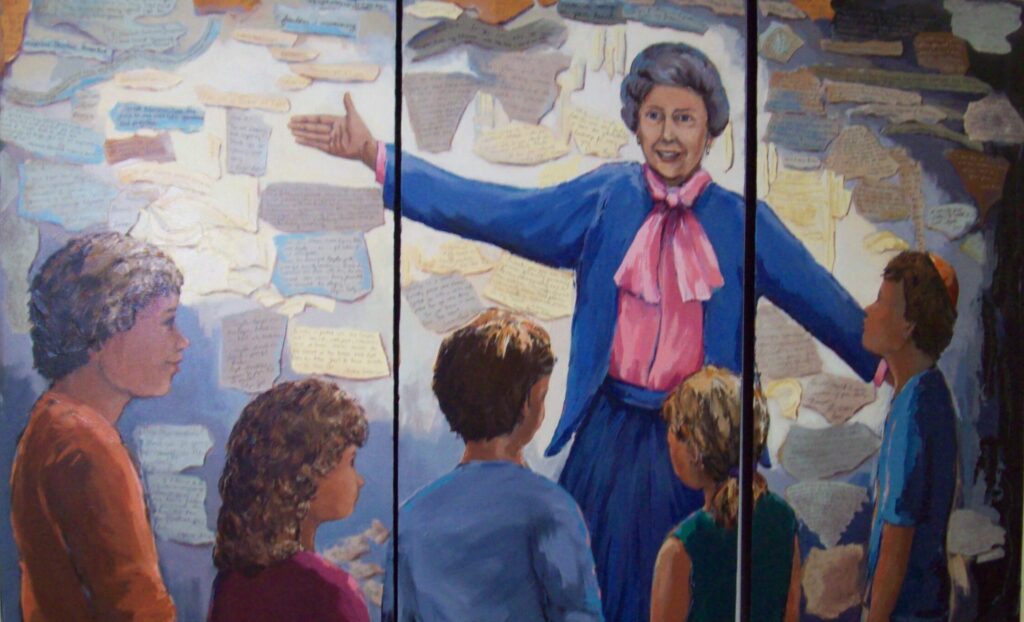Elizabeth Feldman de Jong’s poem focuses on the tattoo process, starting from her waiting in line right after arriving at Auschwitz-Birkenau. Ms. Fishman formatted this poem in a way that would display the “steps in line” Mrs. De Jong took, utilizing repetition in the stanzas and formatting elements. For example, Ms. Fishman repeated the first stanza again later in the poem to show that Mrs. De Jong is now onto the next “step” in the line. The poem’s content is important; however, the formatting is equally essential to expressing the survivor’s mental state and overall experience.
This experience was traumatizing for Mrs. De Jong. She was separated from her husband, father, and mother as soon as they arrived. She was immediately thrust into a line full of terror and confusion. The first “step” in the line was to have her tooth taken out because, as she states in her essay, “Personal Reflections,” she “happened to have one gold crown on one of my teeth which they extracted right there and then.” The Nazis had already stripped all material items from her, and now they were taking pieces of her body for themselves as well.
The next “step” in the line was the tattooing process. Mrs. De Jong explains this moment best when she states that she was “bleeding from my mouth (and from my heart).”1 The tattooist, another prisoner, took pity on her and told her he would “make the number very small” (segment 50). He kept his promise, and, according to Mrs. De Jong, her tattoo is the smallest one that has ever existed. Hence the line “so small, so small.” However, that line serves a dual purpose (as most of Ms. Fishman’s lines do) because, in this moment, she feels “so small,” worth nothing.
When she discusses this event in her testimony, she can be seen on the verge of tears, conveying how painful the memory still is to this day.
Mrs. De Jong’s poem juxtaposes Mr. Adam Boren’s first poem, “127956.” Ms. Fishman utilized this juxtaposition to enlighten her readers on how the tattoo process was for men versus how it was for women. Not every man or woman may fall into these assigned categories; however, through her research, she found that Mr. Boren’s and Mrs. De Jong’s experiences expressed the rule among men and women. Women, as seen here with Mrs. De Jong, remembered every detail, every pain they felt, holding on to the images decades after they were liberated. When they tell their story of being tattooed, they elaborate further on the process and the specific moment of tattooing. Men, on the other hand, which will be seen with Mr. Boren, tend to gloss over the entire process, lumping it in with other events, wasting no time to elucidate more on their feelings, thoughts, or emotions.
SMALL
Terror and fear, terror and fear
Pushed through the line
Left right, left right
Not knowing what is near
They check the teeth
Ripped out of my mouth
into their hands
that miniscule gold piece
The tears run
Mixing with my blood
White to red, white to red
What is next to come?
Bleed from my mouth
But my heart pours the most
Terror and fear, terror and fear
Pushed through the line
Left right, left right,
Not knowing what is near
The man sees my face
how broken inside I feel
Understanding
A prisoner too of this place
I have to he states
The numbers come
So small, so small
Taking pity on my fate
Bleed from my arm
But my heart pours the most.
